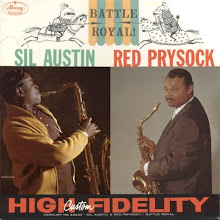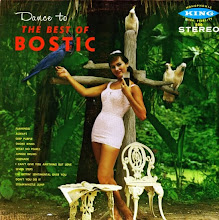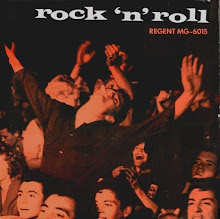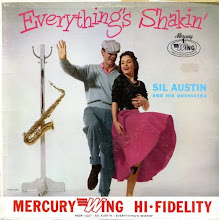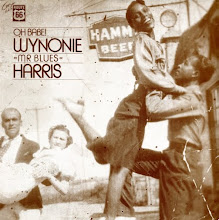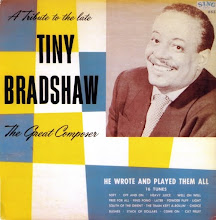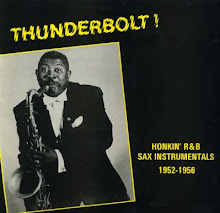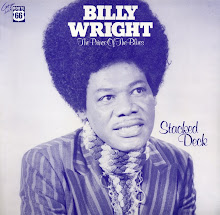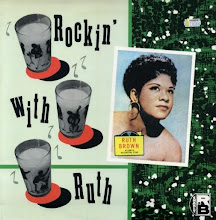Recorded at WOR Studios,
NYC on August 14th, 1946 .
Personnel: Trummy Young (tb); John Hardee (ts); Marlowe Morris (p); Tiny Grimes
(g); Jimmy Butts (b); Eddie Nicholson (d)
With thanks to El Enmascarado for his rips and scans from this Blue Note 78 rpm disc.
Before guitarist Lloyd “Tiny” Grimes was issuing those great
jump blues singles on the Atlantic label and before he had renamed his group
“The Rocking Highlanders”, dressing them in kilts and Tam O’Shanters, and yea,
well before he was recording even more jump blues and backing the likes of J.B.
Summers, Haji Baba and Screamin’ Jay Hawkins on Gotham, our hero was one cool
dude on the New York jazz scene.
He was a late starter on the four string guitar, having
commenced his musical career on the piano and as a tap dancer. In 1940, not
long after taking up the guitar, he joined the already successful jive group
The Cats & The Fiddle. From there he joined the illustrious pianist Art
Tatum and bass player Slam Stewart to form the Art Tatum Trio. Inevitably his
guitar playing improved greatly in such company and in 1944 Tiny formed his own
group. While with the trio he had become a fixture on the New
York jazz club scene and he was soon picking up
recording work with Ike Quebec, Coleman Hawkins and Hot Lips Page.
Tiny’s first session as a leader (for Savoy
in September 1944) has gone down in jazz history as Charlie Parker (who had
been jamming with Tiny’s band at the Downbeat Club) was on alto sax. To round
off the session the group recorded Parker’s “Red Cross”, an instrumental based
on the chords of “I Got Rhythm” which is considered an important step in the
development of be-bop.
After the Parker session, Tiny was on sessions on various labels
with Ike Quebec, Coleman Hawkins, Hot Lips Page, Cozy Cole, Billie Holiday,
Earl Bostic, John Hardee and Buck Clayton. In August 1946, Tiny finally got
another session as a band leader with jazz label Blue Note. Two singles
resulted from the session – the two-parter “Flying Home” and “’C’ Jam Blues” /
“Tiny’s Boogie Woogie.”
 |
| Tiny Grimes circa 1948 - William Gottlieb collection |
Listen to “Red Cross” featuring Charlie Parker and “Nobody
Knows The Way I Feel This Morning” by Gatemouth Moore with the Tiny Grimes
Swingtet -
Red Cross (Savoy
532). Recorded NYC, September 15th,
1944 . Personnel: Tiny Grimes (g); Charlie Parker (as); Clyde
Hart (p); Jimmy Butts (b); Doc West (d)
Nobody Knows The Way I Feel This Morning (National 4015).
Recorded NYC, October 25th, 1946 .
Personnel: Gatemouth Moore (vcl); Russell Royster (tpt); Herman Flintall (as);
John Hardee (ts); Sam Benskin (p); Tiny Grimes (g); Al Raglin (b); Eddie
Nicholson (d)
Sources:
Dan Kochakian & Dave Penny - Tiny Grimes Discography
Part 1, Blues & Rhythm Magazine, No. 228, April 2008
Dan Morgenstern - sleeve notes to “The Changing Face of
Harlem: The Savoy Sessions” Savoy Jazz 2LP set, SJL 2208, 1976
Claude Carrière - sleeve notes to “Charlie Parker: The
Complete Savoy Sessions Volume 1”
Savoy LP, WL70520, 1984




















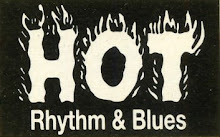





.jpg)


%2045%20-%208602A.png)















